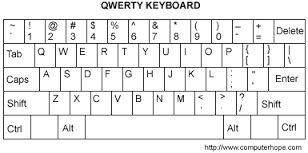

It could also clear all text to the end of the line or end of the screen. The DataPoint 3300 used a screen display to show typed text, and was capable of moving the cursor using arrow keys. Other versions of this terminal were also marketed, including the DEC VT06 and the HP 2600A. In 1969, the Computer Terminal Corporation began shipping the DataPoint 3300, which was the first computer terminal meant to replace the teleprinter. Several years later after the introduction of Multics in 1964 and VDTs (video display terminals) that allowed users to see what they are typing on a screen as they typed. Later in 1948, the BINAC computer took it a step closer to today's computers by making the teletype electromagnetically controlled which allowed the computer to input data and print results. Although much different than today's computer keyboards, the teletype machine punched holes into a punch card and then was fed into a card-reader. The first digital computer known as the ENIAC that was completed in 1946 used a teletype machine to input data into the computer. First computing devices with teletype machines Charles Krum continued on Frank Pearne work to help invent the teleprinter that was developed from 1902 to 1918.
#Typewriter keyboard history code
In 1874, Emile Baudot invented the Baudot code that was later extended by Donald Murray who invented the telegraphic typewriter that would later help become the teleprinter. The keys were used to represent each letter in the alphabet and make it easier for everyone to send messages. Later, Royal Earl House patented a printing telegraph in 1846 that used 28 piano-style keys. The electrical telegraph was first invented by Pavel Schilling in 1832 and allowed for a single key to be used to send Morse code messages over a line. The invention of the telegraph, keypunch, and teleprinterĭuring the late 1700s, Joseph Marie Jacquard developed the Jacquard Loom that was later expanded upon in the late 1800s and early 1900s by Herman Hollerith with his keypunch inventions. By 1986, more than 13 million Selectric typewriters had been sold. The typeballs were also removable, allowing the user to clean them and change to other typeballs for a replacement or modify the font. Unlike other typewriters, it used a typeball which was small ball containing characters that would strike an ink ribbon. The picture is a woman next to an Underwood typewriter.īy the early 1900s, typewriters from all manufacturers began to become more alike, until IBM introduced its IBM Selectric typewriter on July 27, 1961. Later with the help of John Underwood, they created the Underwood company in 1895 and released its first typewriter in 1896. One of the biggest improvements for this typewriter was the ability to see the writing as it was typed. The first Underwood typewriter was invented by Franz Xaver Wagner who patented the typewriter on April 27, 1893, U.S. The first successful modern typewriter is considered to be the Underwood typewriter that sold five million of its typewriters by 1939. 2 typewriter introduced in 1878 that had one Shift key on the left side of the keyboard.

The first keyboard with a Shift key was introduced on the Remington No.

Below is a picture of the Type-Writer that was created by Christopher Sholes, Carlos Glidden, and Samuel W. Also, the Type-Writer introduced the QWERTY layout, which is still used on almost all US keyboards today. However, the first practical typewriter and the word "Type-Writer" was first developed and patented in 1868 by Christopher Sholes. The invention of the typewriterĭuring the mid and late 1700s and early 1800s, several typing and writing devices were created around the world. The first writing devices were designed in the 1700s and the first to be patented was by Henry Mill in London, England in 1714. As with many inventions, there were many different inventions including the typewriter, teleprinters, and keypunches that helped lead up to the modern computer keyboard we use today.


 0 kommentar(er)
0 kommentar(er)
